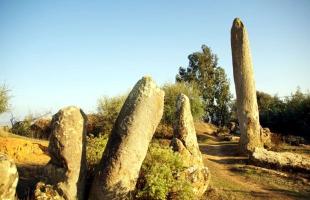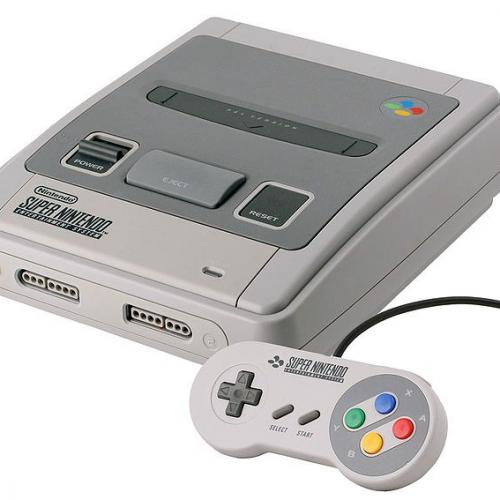Copy Link
Add to Bookmark
Report
EJournal Volume 05 Number 02

_______ _______ __
/ _____/ /__ __/ / /
/ /__ / / ____ __ __ __ ___ __ __ ____ / /
/ ___/ __ / / / __ \ / / / / / //__/ / //_ \ / __ \ / /
/ /____ / /_/ / / /_/ / / /_/ / / / / / / / / /_/ / / /
\_____/ \____/ \____/ \____/ /_/ /_/ /_/ \__/_/ /_/
December, 1995 _EJournal_ Volume 5 Number 2 ISSN 1054-1055
There are 699 lines in this issue.
An Electronic Journal concerned with the
implications of electronic networks and texts.
At last count, 3018 subscribers in 37 Countries
University at Albany, State University of New York
Department of English
EJOURNAL@albany.edu
CONTENTS: [This is line 22 ]
ARCHIVING ELECTRONIC DOCUMENTS [Begins at line 65]
A Report of a Proposal
by David Bearman
PRIORITIES FOR PUBLICATION PRESERVATION [at line 339]
by Sheila Webber
AMBIGUITY MACHINES [at line 452]
[OR, "Precision, hah! Computers are
better at poetry than they are at math."]
by Jacques Leslie
(republished from BYTE magazine)
Editorial Comment [at line 553]
Information about _EJournal_ [at line 604]
About Subscriptions and Back Issues
About Supplements to Previous Texts
About _EJournal_
People [at line 661]
Board of Advisors
Senior Editors
Consulting Editors
***********************************************************************
*****************************************************************
* This electronic publication and its contents are (c) copyright *
* 1995 by _EJournal_. Permission is hereby granted to give away *
* the journal and its contents, but no one may own it. Any and *
* all financial interest (except where noted) is hereby assigned *
* to the acknowledged authors of individual texts. *
* This notification must accompany all distribution of _EJournal_.*
*****************************************************************
========================================================================
A R C H I V I N G E L E C T R O N I C D O C U M E N T S
A Report of a Proposal
by David Bearman
PREFACE (by _EJournal_)
In an era of electronic communications one can mount many arguments
against building more filing cabinets to hold paper. This essay is
an _EJournal_ adaptation of David Bearman's extensive proposal about
standards for Virtual Archives. It proposes six layers of
"metadata" that ought to surround all electronic records so they can
be considered permanent and trustworthy. It also suggests,
implicitly, that we should establish and begin using standards for
such metadata capsules.
Along the way, almost incidentally, the essay highlights the amazing
amount of information embedded in those oft-maligned folder-filled
filing cabinets. By pointing out some of the minutiae needed to
upgrade everyday binary storage into trustworthy virtual archiving,
the essay (and especially the detailed proposal) may spur the
on-line community to establish standards and "enforce" them soon-
-perhaps with the example of SGML's development as a model. Or the
proposal might prompt us to think again about our paperless
fantasies.
David Bearman's own complete proposal is to be presented in Beijing
in 1996. It encompasses the extreme case of recording business
transactions so they will be acceptable as evidence in courts.
The most up-to-date version of the requirements, specifications,
production rules, metadata standards, literary warrant and research
papers on the variables in electronic recordkeeping in organizations
are maintained on the Project's Website at the University of
Pittsburgh. Go to:
http://www2.lis.pitt.edu/~sochats/nhprc.html
----------------------------------------------------------------------
ARCHIVING ELECTRONIC DOCUMENTS
A Report of a Proposal
by David Bearman
INTRODUCTION [line 107]
Within ten years, most of the records in our society will be made
and transmitted and stored electronically. We will be able to
access them from anywhere. This means that our default assumptions
about the custody of records, which are still rooted in physical
terms like "hold" and "musty" and "on-site availability," will be
replaced by policies to ensure the more generic "retention" and
"disposition" and "virtual availablity."
The ultimate goals of archiving won't change, but the means of
achieving those goals will. Right now, we should be adopting
standards and methods of virtual archiving, using available
technology, so that we can be spared having to redesign multiple
ad-hoc systems and then, a few years from now, retrofit masses of
accumulated documents. Indeed, critical observers have argued that
the Global Information Infrastructure will not be able to support
"serious" work until we can satisfy requirements for the
"integrity," "authenticity," "reliability" and "archiving" of
digital information . [1]
THE METADATA
These six encapsulating layers would constitute documents destined
to qualify as and to be archived as virtual records:
1. Handle.
2. Terms and Conditions.
3. Software and hardware dependency flags.
4. The document-creation context.
5. The binary-large-object, or BLOB- -the text/ display, the
document, the record- -itself.
6. The history of the record.
In visual, paperbased imagery, the first four layers are on the
"top" of the document and the sixth is on the "bottom."
Some points about about the six Metadata layers: [line 149]
1> Handle: Uniqueness is important, of course, and so is a flag
showing that what follows (or is "enclosed," in paperbased
terminology) is indeed a record. Such flagging will have to conform
to an international standard.
2> Terms and Conditions: At the outset, eligibility is set by the
creator. Are there restrictions involving permission, payment, or
"not before" criteria? What's the address of whoever can grant
permission? Is the record "read only"? Within the access layer
there should also be disposition information. Who may authorize
erasure? Is there some "Sunset" provision?
3> What kind of file is it? Text, graphic, sound ....? ASCII,
raster, sampling ....? Compressed? Encrypted? With what hardware,
operating system and application was it created? When these data
are provided (in the kind of drill-down detail laid out in Bearman's
complete proposal), they will make it possible to adapt the record
(and metadata) for reading with hardware and software constructed to
specifications not currently anticipated. [Worriers should look at
Jeff Rothenberg, "Ensuring the Longevity of Digital Documents" in
the January, 1995 _Scientific American_, pp 42-47.]
4> The context of the document's origin: Who created it? Where
was it broadcast, or to whom was it sent? Who got copies? For
business transactions, who is responsible for contractual
implications?
5> The encapsulated BLOB itself, the record, the document, the
text/ display- -the Binary Large OBject. [It could, of course,
contain links to other documents and sites; the thought of archiving
www hypertexts is enough to make the virtual archiving of
standalone documents look easy.]
6> The history: Viewed, copied, edited, filed, indexed, forwarded,
abstracted- -when, and by whom, and what portions. Among other
matters, the history should assure readers that nothing from the
original document has been left out along the way.
Stripped of details and references, this is the conceptual core of
David Bearman's proposal. What follows are pointers
(non-electronic) to pertinent material.
--------------------- [line 193]
First, the professional and organizational aspects of reengineering
the archival profession can be explored in these references:
David Bearman & Margaret Hedstrom, "Reinventing Archives for
Electronic Records: Alternative Service Delivery Options" in
Hedstrom, Margaret ed. _Electronic Records Management Program
Strategies, Archives and Museum Informatics Technical Report #18_,
1993, pp.82-98
Margaret Hedstrom, "Electronic Archives: Integrity and Access in the
Networked Environment" (Second International Conference on
Scholarship and Technology in the Humanities, January 1994);
forthcoming
New York State Archives and Records Administration, "Building
Partnerships for Electronic Recordkeeping: The New York State
Information Management Policies and Practices Survey. Summary of
Findings," (by Margaret Hedstrom, Project Director), August 1994
-------------------------
Second, questions about the technical needs, and costs, of
reconfiguring paper-based archives are being addressed by Digital
Library projects throughout the world:
Library of Congress, The National Digital Library Program
(Washington, DC, January, 1995)
Research Libraries Group, "Digital Imaging Technology for
Preservation." _Proceedings_ from an RLG Symposium held March 17 &
18, 1994, ed. Nancy E. Elkington (Mountain View CA, RLG, 1994)
Anne R. Kenney & Lynne K. Personius, "Joint Study in Digital
Preservation: Report Phase I (January 1990-December 1991)"
(Washington DC, Commission on Preservation and Access, 1992)
Anne R. Kenney, Michael A. Friedman and Sue A. Poucher, "Preserving
Archival Material Through Digital Technology." Final Report (Ithaca
NY, Cornell University Library, 1993)
------------------------- [line 235]
Third, these are places where general issues of recordkeeping
requirements have been discussed:
IEEE Mass Storage Systems Standards Technical Committee Metadata
Project, Second Meeting on Metadata for the Administration and
Access of Stored Information, Austin, Texas, February 17-18, 1994
[Documents discussed at this meeting included:
- "The Intelligent Archive" (UCRL-TB-115079-6 Lawrence
Livermore Laboratory, Carol Hunter, Project Manager)
- "Whitepaper on Data Management", Robyne Sumpter, Lawrence
Livermore Laboratory, February 10, 1994
- "A Metadata Capability Supporting the Hierarchical Storage
and Access of Large Abstract Data Entities," J. C. Almond and
Rekha Singhal, University of Texas CHPC
New York State Archives & Records Administration, "Guidelines for
the Legal Acceptance of Public Records in an Emerging Electronic
Environment," (Albany, Dept. of Education, New York, 1994) 35pp.
NHPRC grant #93-030, "Variables in the Satisfaction of Archival
Requirements for Electronic Records Management."
David Bearman, "Electronic Evidence: Strategies for Managing Records
in Contemporary Organizations," (Pittsburgh, Archives & Museum
Informatics, 1994).
David Bearman and Ken Sochats, "Formalizing Functional Requirements
for Recordkeeping," unpublished draft paper included in University
of Pittsburgh "Functional Requirements for Recordkeeping" Project
"Reports and Working Papers" (LIS055/LS94001), September, 1994.
Richard J. Cox, "Re-Discovering the Archival Mission," _Archives and
Museum Informatics/Cultural Heritage Informatics Quarterly_, vol.8
#4, 1994, pp.279-300.
-------------------------- [line 277]
Fourth, these are places where the documentation requirements of
specific record-keeping domains are discussed:
A. H. Boss, "Electronic Data Interchange agreements: private
contracting towards a global environment," _Northwestern Journal of
International Law and Business_, vol.13 (1992);
Electronic Data Interchange Association, _The United States
Electronic Data Interchange Standards_;
J. L. Lamprecht, _Implementing the ISO 9000 Series_ (1993);
A. J. Marcella & S. Chan, _EDI Security, Control and Audit_ (1993);
Miller, _GAAS Guide_ (1994);
J. A. Rabbitt, _The ISO 9000 Book: A Global Competorts Guide to Compliance
and Certification_ (1993);
J. P. Tomes, _Healthcare records management, disclosure and
retention_ (1993);
B. Wright, _The Law of Electronic Commerce_ (1991)
The "Functional Requirements for Recordkeeping" project has compiled
a database of "warrant" for the requirements defined within the
project. The most up-to-date version of the requirements,
specifications, production rules, metadata standards, literary
warrant and research papers on the variables in electronic
recordkeeping in organizations are maintained on the project WWW
server at the University of Pittsburgh.
http://www2.lis.pitt.edu/~sochats/nhprc.html
-------------------------------------------- [line 313]
NOTE [1]
Clifford Lynch, "The Integrity of Digital Information: Mechanics and
Definitional Issues," _Journal of the American Society for
Information Science_, vol.45 #10, December, 1994, pp.737-744;
Peter Graham, "Intellectual Preservation in the Electronic
Environment," _Proceedings_, Library Collections and Technical
Services, 1992, pp.18-32 (Chicago, ALA, 1992);
Henry Perritt, "Public Information in the National Information
Infrastructure," Report to the Regulatory Information Service
Center, General Services Administration, and to the Administrator,
Office of Information and Regulatory Affairs, Office of Management
and Budget, 5/20/94
******************************************************************
* This essay in Volume 5 Number 2 of _EJournal_ is (c) copyright *
* 1995 by _EJournal_. Permission is hereby granted to give it *
* away. Any and all financial interest is assigned to David *
* Bearman. This notice must accompany all copies of this text. *
******************************************************************
------------------------------------------------------------------
P R I O R I T I E S F O R P U B L I C A T I O N [line 339]
P R E S E R V A T I O N
by Sheila Webber
[Editor's note: I plucked this Note from a List where members were
conversing about what constitutes "electronic publication." Ms.
Webber's Note appears here with her permission; I was unable to
reach her for approval of the changes made in preparing it for
publication.]
I think there is a need to look afresh at the whole spectrum of
media in which knowledge, entertainment, culture (or whatever) can
be transmitted, and then, as a separate task, to work out fresh
criteria for deciding what "publications"- -in whatever medium-
-should be top priority for cataloguing and preservation.
We should keep clear, I believe, the distinction between being
eligible for classification as a "publication" and being chosen for
archiving. Not every publication should be kept; on the other hand,
e-stuff should not be excluded from preservation because it doesn't
fit into papyrocentric "publication" pigeonholes.
The British Library, for instance, in its leaflet on legal deposit,
says that "A work is said to be published when copies of it are
issued to the public." As we know, it is not yet universally
agreed, in an electronic context, just what "issuing" consists of,
or what a "copy" is. What if one were simply to substitute
"accessible to" for "issued to," so that the definition of
"published" would include material in electronic format that is
publicly accessible? [line 369]
Some might worry that this definition would make (e.g.) every World
Wide Web page a "publication," and that the entire Web would then
need to be catalogued and archived. But this is a needless worry.
Not every "publication" needs to be archived. The BL doesn't
collect every printed promotional leaflet or every free parish
newsletter, etc., on legal deposit. Although such ephemera *do*
meet the BL's criteria, and it *could* collect them if it wanted to,
it makes decisions about not including certain types of publication
in the national bibliography and the national collection.
Over the years national libraries evolve policies based on
pragmatism, and on experience about what seems most likely to be of
value to future users. For example, experience showed that material
published as books was more likely than material published as
leaflets to be of lasting value. Therefore (as a cost-effective
alternative to considering the merits of every item individually)
the type of publication "book" is included in national
bibliographies whereas "leaflets" generally aren't.
As new types of publication evolve, organisations which currently
have a national/ global archive function will have to rethink what
type of publication is both appropriate and "reasonable" (including
cost-efficient) to record and preserve. For example, a print
journal may ultimately be replaced by a web site which has new
material and new links added to it continuously; a company may
provide information of more than ephemeral interest at its
"promotional" web site. The old decision-by-type approach will no
longer be valid. New criteria for deciding what type of
"publication" is likely to be of lasting value will evolve.
Whilst for scholarly communication the printed (or digitally
encoded) word may still be the prime mechanism for recording and
summarising knowledge and research, this might not be the case in
the future. From the point of view of historical research, for
example, a TV broadcast by a world leader may already be the
preferred and richest source, rather than a transcript of what was
said; a graphical simulation might form a vital part of scientific
research, and so forth. In everyday life, most citizens and (as
surveys show) business people use informal networks, non-print media
and grey/trade literature before approaching traditional information
sources. [line 411]
It is well known that for relatively new media such as films, sound
recordings and broadcast programmes, "bibliographic control" is
still often non-existent, or is restricted to in-print items.
Online databases have been around for decades now, and more and more
of them have no print equivalent, but national libraries have for
the most part failed to work out how or what they should archive.
Obviously there are huge obstacles to rethinking the area of
cataloguing and archiving global knowledge: most particularly
money (lack of);
the technology itself (the problem of obsolescent and disappearing
hardware and software);
complicated issues of national pride (e.g., we still seem to be
playing the "who's got the largest national library" game); and
existing structures and procedures.
I suppose in some ways we shouldn't get too depressed, though.
Think how long it took between printing being invented and the
appearance of systematic trade and national bibliographies
(centuries?). Even so, we need to begin earnestly sorting out not
only what constitutes "publication," but also what publications--
--in whatever medium or format-- --deserve to be preserved.
Sheila Webber
University of Strathclyde
sheila@dis.strath.ac.uk
******************************************************************
* This essay in Volume 5 Number 2 of _EJournal_ is (c) copyright *
* 1995 by _EJournal_. Permission is hereby granted to give it *
* away. Any and all financial interest is assigned to Sheila *
* Webber. This notice must accompany all copies of this text. *
******************************************************************
------------------------------------------------------------------
A M B I G U I T Y M A C H I N E S [line 452]
Precision, hah! Computers are better
at poetry than they are at math.
by Jacques Leslie
It should not have taken the Pentium math-bug debacle to remind us
that computers do not always deliver absolute precision. On the
contrary, for all their grounding in mathematical exactitude and
their annoying literal-mindedness, computers are really ambiguity-
generating machines.
Consider humble E-mail, perhaps the simplest form of computer-
mediated communication. At first glance, the difference between a
message written on paper and sent through the postal service versus
its identically worded electronic counterpart seems insignificant:
Both contain the same language, so their meaning is the same- -or
is it?
One is an artifact of the material world, with intimations of
permanence. The other, a captive of cyberspace, can be eliminated
in a keystroke. One is evocative- -its paper quality, handwriting
and scent all convey nuances of meaning- -while the other is framed
within the bland uniformity of ASCII. Moreover, it is unlikely that
the two messages would use precisely the same words. The tendency
in E-mail is toward informality: _Gonna_ and _gotta_ replace
_going to_ and _ must_. The shift in E-mail is toward oral speech
patterns, a rejection of the precision of written discourse in favor
of spontaneity. [line 480]
In publishing, the distinction has starker ramifications. A
conventionally printed book may be valued not just for the words
inside it but as an object, whose worth is often dictated by such
factors as whether it is a first edition, whether its author signed
it, or whether a famous person owned it. In contrast, an
electronically published book is an entirely different animal. For
starters, the idea of copyright is undermined, since the digital
book is infinitely reproducible. The notion of authorship is
weakened, for the new medium encourages collaboration, often by
anonymous contributors. Even the idea of the the book itself is
threatened, as publishers of electronic journals have already
discovered.
Photography is also rendered fuzzy by digitilization. The
malleabilty of digitized photographs has caused people to look on
all photos with deepened skepticism. It is now virtually impossible
to tell which images are digitally manipulated. Although
photographic trickery has been around for almost as long as the
camera, digital technology makes it much easier to doctor an image.
Digital art has also broken down the distinction between an
"original" and its copies, for all possess the same digital
components.
In some digital pursuits, ambiguity is exactly the point. In
Multiuser Dimensions, or MUDs, those adolescent computer playgrounds
in which players take on imaginary identities while cavorting within
a fictional universe, much of the excitement stems from the simple
fact that few players know with certainty anything about one
another. The player with whom I'm conversing may be a man who
presents himself as a woman, a woman presenting herself as a man,
or, for that matter, a cleverly designed "bot" that responds to
comments in ways that produce the illusion of personhood. [line 513]
Digital audio raises interesting questions. Composer John Oswald's
Plunderphonics, for example, consists of works by musicians ranging
from Beethoven to Michael Jackson that Oswald had digitally
manipulated in startling and amusing ways. By creating "new" works
out of familiar ones, Oswald demonstrated that musical authorship is
a surprisingly complex issue, since all music borrows from all the
sounds that surround us.
One reason for the rise of computer-generated ambiguity surely is
the newness of digital technology. Just as in the early years of
electrification and the telephone, we're still trying to figure out
what we want computers to do for us, and in the meantime we're
confused.
But something else is going on here as well. We like to think of
computers as innately masterful at computation (thus, our ridicule
for the Pentium when it returns inaccurate results). But we tend to
forget that because some number strings are infinitely long, even
the most sophisticated computers must settle for numerical
approximations- -which is to say, imprecision. And imprecision
doesn't apply just to computation. While computers' breathtakingly
broad impact stems from their capacity to render so much of reality
in 0s and 1s, we forget that those combinations of 0s and 1s are all
approximations or, put another way, metaphors. Of course, metaphors
rightfully dwell in the province of poetry, where they don't mimic
reality but use ambiguity to evoke it.
by Jacques Leslie
jacques@well.com
*****************************************************************
* Reprinted with permission, from the October 1995 issue of BYTE *
* magazine. (c) by The McGraw-Hill Companies, Inc. All rights *
* reserved. *
******************************************************************
=========================================================================
E D I T O R I A L C O M M E N T [line 553]
I hope the renewal confusion is over. THANKS for your patience. We
knew that many addresses were no longer valid, and we guessed that
quite a few people would decide to not renew. But we did not
anticipate being caught up in Albany's migration from Bitnet (and
Listserv). The transition hasn't been as "transparent" as everyone
hoped.
Thanks, too, for the many thoughtful replies to the "ASCII vs. Web"
question. Very few said "ASCII only"; some said "ASCII preferred";
most said "sure, move to the Web." There were several compelling
rationales, though, for continuing to deliver the entire journal
instead of just telling you where to look for it. So we will get
our server staightened out and keep e-mailing- -and we will keep
issues shorter than 1000 lines so we won't overload mailboxes. And
we will keep developing our HTML/ www versions. The journal is
archived at
http://www.hanover.edu/philos/ejournal/home.html
and there is also an experimental Web site at
http://www.albany.edu/rachel.albany.edu/~ejournal/ejournal/ejournal.html
About Sheila Webber's text: It caught my eye as raising a
distinction not always acknowledged. Because one of the founding
purposes of _EJournal_ was to share the kind of Good Point that
appears on Lists and would otherwise not be noted elsewhere, I
grabbed it to share with you.
About Jacques Leslie's text: Again, I liked it. It expresses a
point of view widely shared outside the computing-specialist
community, but seldom so well articulated and widely distributed.
McGraw- Hill didn't want to let us re-"print" it, at first, because
doing so "would compete with the electronic services McGraw-Hill
offers." They did go on to say, however, that we could point to
http://www.byte.com
"where the article will be posted."
I took the paradox as a challenge and wrote (USMail) to question
their decision; they thought the matter over and graciously changed
their approach. Paradigm shifts take time.
======================================================================
-------------------------------------------------------------
-------------------- I N F O R M A T I O N --------------------
----------------------------------------------------------------------
-------------------------------------------------------------------------
About Subscribing and Sending for Back Issues: [line 604]
In order to: Send to: This message:
-------- -------- --------
Subscribe to _EJournal_: LISTSERV@albany.edu SUB EJRNL YourName
Get Contents/Abstracts
of previous issues: LISTSERV@albany.edu GET EJRNL CONTENTS
Get Volume 5 Number 1: LISTSERV@albany.edu GET EJRNL V5N1
Send mail to _EJournal_: EJOURNAL@albany.edu Your message...
Reach our archive site:
http://www.hanover.edu/philos/ejournal/home.html
Reach our experimental Web site:
http://rachel.albany.edu/~ejournal/ejournal/ejournal.html
----------------------------------------------------------------------
About "Supplements": [line 625]
_EJournal_ continues to experiment with ways of revising, responding
to, reworking, or even retracting the texts we publish. Authors who
want to address a subject already broached- -by others or by
themselves- -may send texts for us to consider publishing as a
Supplement issue. Proposed supplements will not go through as
thorough an editorial review process as the essays they annotate.
---------------------------------------------------------------------------
About _EJournal_:
_EJournal_ is an all-electronic, e-mail delivered, peer-reviewed,
academic periodical. We are particularly interested in theory and
practice surrounding the creation, transmission, storage,
interpretation, alteration and replication of electronic "text"-
and "display" -broadly defined. We are also interested in the
broader social, psychological, literary, economic and pedagogical
implications of computer-mediated networks. The journal's essays
are delivered free to Internet addressees. Recipients may make
paper copies; _EJournal_ will provide authenticated paper copy from
our read-only archive for use by academic deans or others.
Writers who think their texts might be appreciated by _EJournal_'s
audience are invited to forward files to ejournal@albany.edu . If
you are wondering about starting to write a piece for to us, feel
free to ask if it sounds appropriate. There are no "styling"
guidelines; we try to be a little more direct and lively than many
paper publications, and considerably less hasty and ephemeral than
most postings to unreviewed electronic spaces. Essays in the
vicinity of 5000 words fit our format well. We read ASCII; we
continue to experiment with other transmission and display formats
and protocols.
[line 659]
-----------------------------------------------------------------------
Board of Advisors:
Stevan Harnad University of Southampton
Dick Lanham University of California at L. A.
Ann Okerson Association of Research Libraries
Joe Raben City University of New York
Bob Scholes Brown University
Harry Whitaker University of Quebec at Montreal
-------------------------------------------------------------------------
SENIOR EDITORS - December, 1995
ahrens@alpha.hanover.edu John Ahrens Hanover
dabrent@acs.ucalgary.ca Doug Brent Calgary
kahnas@jmu.edu Arnie Kahn James Madison
nrcgsh@ritvax Norm Coombs RIT
richardj@bond.edu.au Joanna Richardson Bond
ryle@urvax.urich.edu Martin Ryle Richmond
-------------------------------------------------------------------------
Consulting Editors - December, 1995
bcondon@umich.edu Bill Condon Michigan
djb85@albany Don Byrd Albany
folger@watson.ibm.com Davis Foulger IBM - Watson
gms@psu.edu Gerry Santoro Penn State
nakaplan@ubmail.ubalt.edu Nancy Kaplan Baltimore
r0731@csuohio Nelson Pole Cleveland State
ray_wheeler@dsu1.dsu.nodak.edu Ray Wheeler North Dakota
srlclark@liverpool.ac.uk Stephen Clark Liverpool
twbatson@gallua Trent Batson Gallaudet
wcooper@vm.ucs.ualberta.ca Wes Cooper Alberta
--------------------------------------------------------------------------
Editor: Ted Jennings, emeritus, University at Albany
Editorial Asssociate: Jerry Hanley, emeritus, University at Albany
--------------------------------------------------------------------------
University at Albany Computing and Network Services
--------------------------------------------------------------------------
University at Albany, State University of New York, Albany, NY 12222 USA















